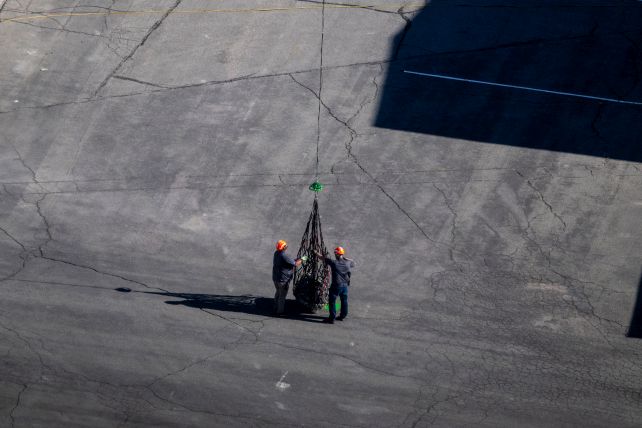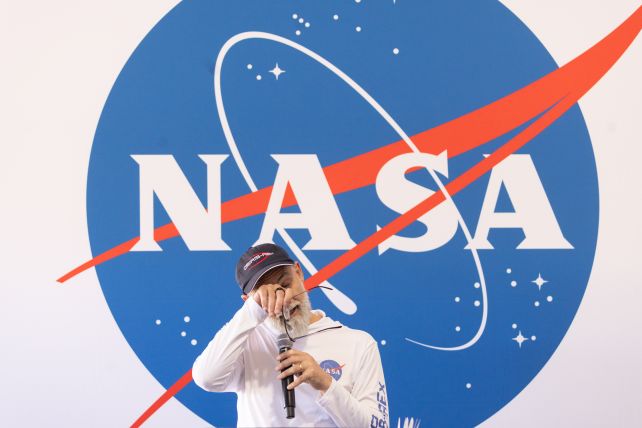Well, they’ve done it. After seven years and 6.21 billion-kilometers, NASA’s OSIRIS-REx has officially delivered a capsule of precious Asteroid Bennu dust to Earth.
It’s a major, incredible achievement, a feat of space prowess, engineering, dedication, and skill. But although the capsule has reached its destination – Earth – there’s now a lot more work to be done.
Scientists hope that analyzing that cosmic dirt will yield new information about the birth of the Solar System, and how the building blocks of life arrived on Earth.
“Today marks an extraordinary milestone not just for the OSIRIS-REx team but for science as a whole,” says OSIRIS-REx principal investigator Dante Lauretta of the University of Arizona.
“Successfully delivering samples from Bennu to Earth is a triumph of collaborative ingenuity and a testament to what we can accomplish when we unite with a common purpose. But let’s not forget – while this may feel like the end of an incredible chapter, it’s truly just the beginning of another. We now have the unprecedented opportunity to analyze these samples and delve deeper into the secrets of our solar system.”
On scene commander of recovery Jasmine Nakayama attached the packaged capsule to a helicopter for transport to the clean facility. (NASA/Keegan Barber)
Upon retrieval from the Utah desert, the capsule was whisked away to a portable clean facility to minimize Earth contamination. That capsule contains an estimated 250 grams (8.8 ounces) of material, but we’re not going to know for sure for a few more days.
In the clean facility, only six people were allowed, clad in bunny suits, nitrile gloves, shoe covers, hair covers, and beard covers. Their role was to disassemble the capsule, removing – but not opening – the collection canister so that it can be flown to NASA’s Johnson Space Flight Center.
There, researchers will carefully open the canister, and measure and inventory the sample, in preparation for the science to come. Portions will be distributed to scientists around the world, for different kinds of analysis. NASA will reveal the results of its first-look analysis on 11 October.
 The capsule was lowered by helicopter into the parking lot in front of the clean room hangar. (NASA/Keegan Barber)
The capsule was lowered by helicopter into the parking lot in front of the clean room hangar. (NASA/Keegan Barber)
The rock is so precious because it represents a highly pristine record of the early Solar System. Space objects like Asteroid Bennu are thought to have remained unchanged since their formation, some 4.5 billion years ago.
We have a fair number of space rock samples here on Earth already, in the form of meteorites that have somehow made their way to our world and crash landed on the surface. But samples like OSIRIS-REx’s collection from Bennu are truly special.
“These samples are some of the most pristine rocks available. Unlike natural meteor falls that can quickly become contaminated by our atmosphere, water and biota, these rocks are unblemished. So, with Bennu we will be analyzing unspoilt samples of the oldest objects in the Solar System,” says mineralogist Nick Timms of Curtin University in Australia.
“We’ll be able to tell a huge amount about what happened when the Solar System was nothing more than dust and gas, and the processes that brought planets together and created the ingredients for life on Earth.”
One major model for how Earth got the ingredients essential for life involves delivery by asteroid bombardment, early on in the Solar System’s history. Studying pristine asteroid material can help scientists discover the likelihood of this model, either entirely or partially.
 Dante Lauretta of the University of Arizona addresses the assembled crowd after the sample retrieval. (Chris Richards/University Communications)
Dante Lauretta of the University of Arizona addresses the assembled crowd after the sample retrieval. (Chris Richards/University Communications)
We can also discover what minerals and molecules were floating around in the early Solar System. Previously, there have been two asteroid sample missions that returned material to Earth, both by the Japan Aerospace Exploration Agency.
Hayabusa delivered less than a milligram of material from Asteroid Itokawa to Earth in 2010, due to a failure of the sampling mechanism. Hayabusa2, much more successful, delivered 5.4 grams of material from Asteroid Ryugu in 2020. From that tiny handful of asteroid, scientists have been able to glean much.
They’ve found grains of stardust older than the Solar System, the building blocks of life, a component of RNA, organic molecules, and the early history of Ryugu as a baby planet in the outer Solar System.
With 50 times that amount of material, scientists are hopeful that their studies of Asteroid Bennu will help solve some of the biggest mysteries of humanity.
“This is all about understanding our origins,” Lauretta said back in 2020, “addressing some of the most fundamental questions that we ask ourselves as human beings: Where did we come from? And are we alone in the Universe?”

